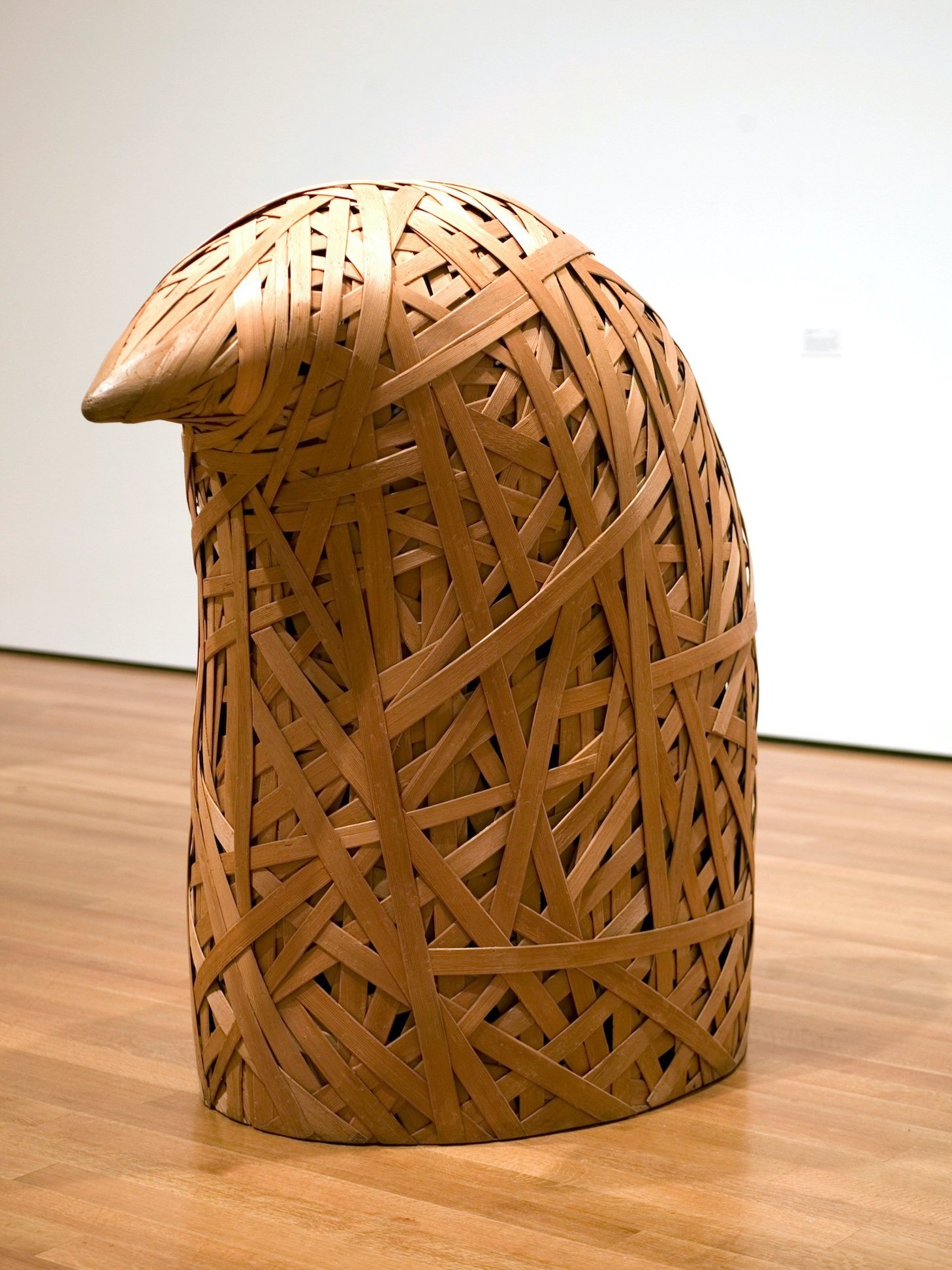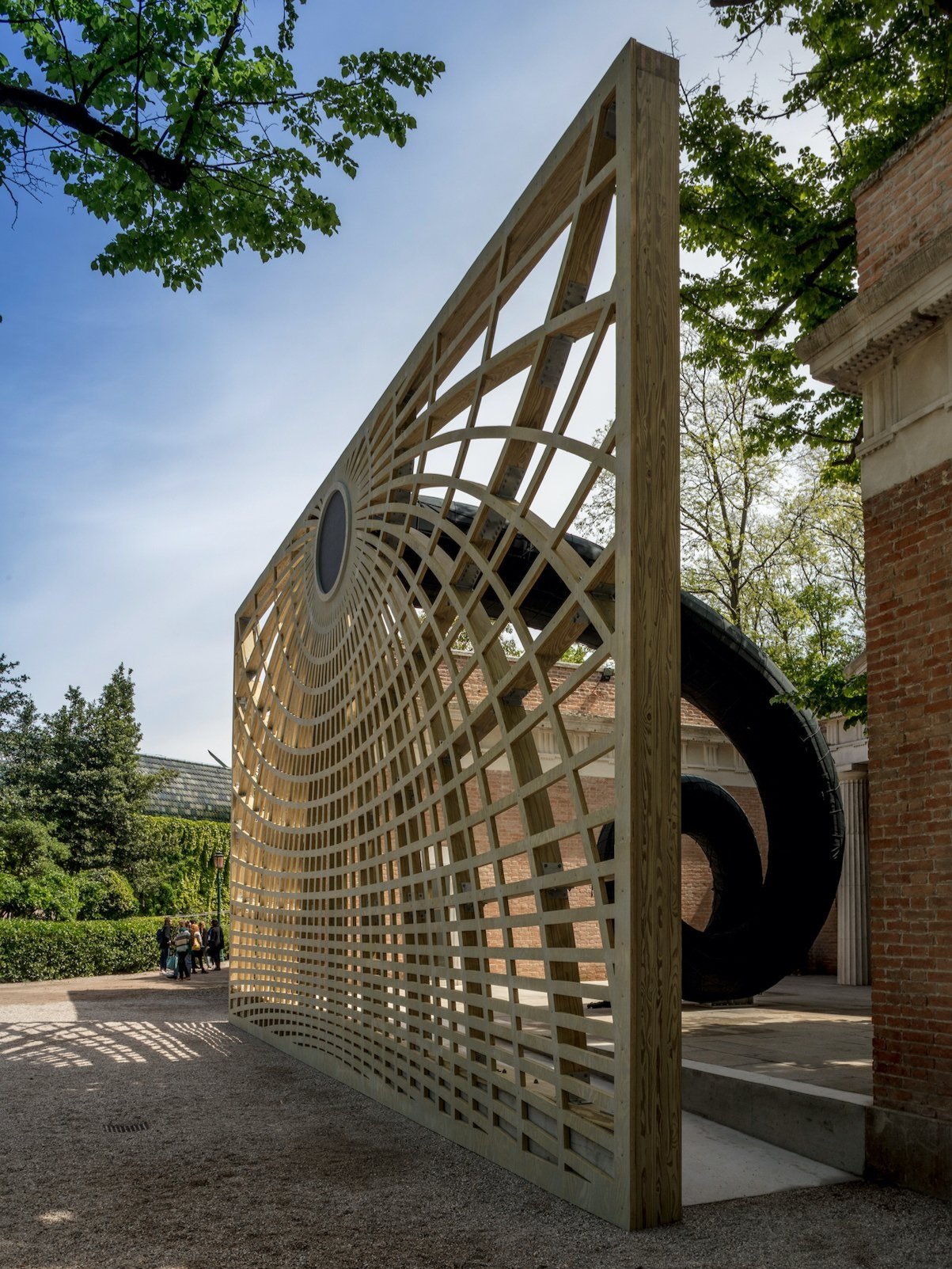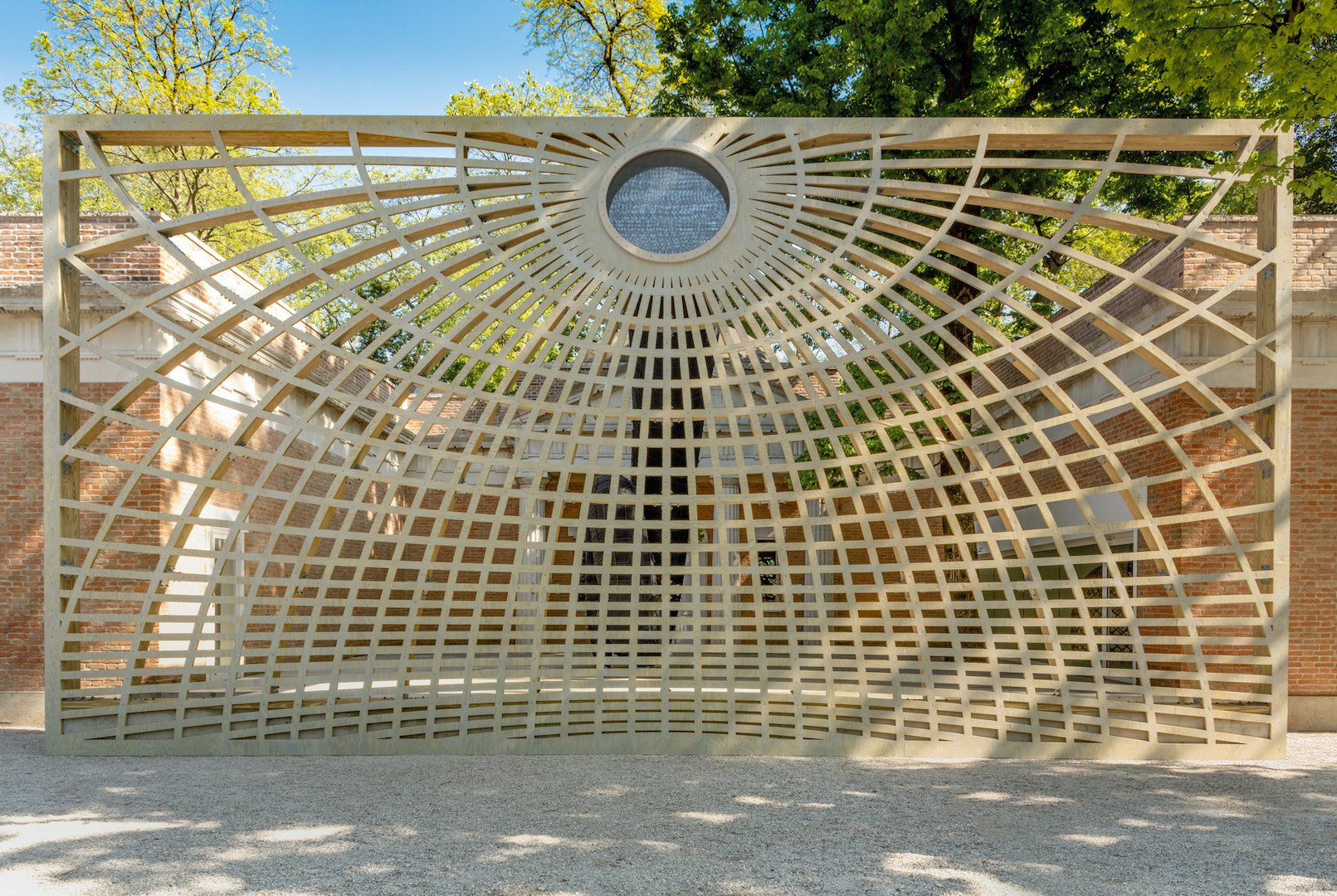Martin Puryear, Ladder for Booker T. Washington, 1996. Ash, maple. 432 x 22 3/4 (narrowing to 1 1/4” at top) x 3 inches. Collection of Modern Art Museum Fort Worth, Gift of Ruth Carter Stevenson, by Exchange. ©Martin Puryear, Courtesy Matthew Marks Gallery.
Suppose you met a person and learned that they had studied joinery, boat building, wood carving, archery, and falconry in their youth. (Yes, falconry.) What might their profession be? “Medieval journeyman” would be a good guess, but this person is alive, well, and busy working in the 21st century. If your second guess was “MacArthur Fellow and world-renowned sculptor,” you’d be right: the answer is Martin Puryear.
Born in Washington DC in 1941, Puryear is one of the most prominent artists of his generation, yet his work stands apart from that of most of his peers for its insistence on materiality, and in particular, a reverence for carpentry and woodwork. Many artists of his generation—Jenny Holzer, Martha Rosler, or Bruce Nauman, to name a few, create works that are characterized as “conceptual.” This usually means that a work of art might comprise the passage of time in a particular setting, or a social encounter inside a gallery space, rather than a discrete object like a painting on a wall. Puryear isn’t usually described as a conceptual artist, but it’s fair to say that his painstaking, labor-intensive practice is so unusual in contemporary art that he’s made an ancient concept new again: craftsmanship.
Martin Puryear, Old Mole, 1985. red cedar. 61 x 61 x 32 inches. Collection: Philadelphia Museum of Art. Photo: Richard Barnes. ©Martin Puryear, Courtesy Matthew Marks Gallery.
Martin Puryear, Swallowed Sun (Monstrance and Volute), 2019. Southern yellow pine, steel, polyester, canvas, rope. 22 ft. 8in. x 44 ft. x 24 ft. 3 in. U. S. Pavilion, 2019 Venice Biennale. Photo: Joshua White. ©Martin Puryear, Courtesy Matthew Marks Gallery.
Puryear graduated from Catholic University of America in Washington, DC, where he studied art, but only after switching his major from biology—an interest he has never entirely abandoned. He traveled to Sierra Leone as a Peace Corps volunteer teaching French, English, art, and science from 1964-66. He famously didn’t bring a camera there, instead making copious use of pens and sketchbooks, even scrap paper as needed, to document what he saw. He studied the local animals and plants, and observed the technique of the craftspeople he met. In 1967 he embarked on a backpacking adventure in northern Sweden, later studying at the Royal Swedish Academy of Arts for two years and becoming skilled in traditional Scandinavian craft practices—one such technique, interweaving thin strips of wood would continue to appear in his sculpture for decades. He returned to the United States to pursue an MFA at Yale University, and began teaching while developing his studio practice.
He was decidedly out of fashion: while Minimalism ruled the artworld, Puryear’s interest in hand-fabrication and traditional skills of carpenters, coopers, and joiners never wavered. He taught at Fisk University in Nashville, the University of Maryland at College Park, and then moved to Chicago, to teach at the University of Illinois in 1978. Around this time, he became fascinated by boatbuilding, and began creating massive outdoor installations such as “Box and Pole” at Artpark in Lewiston, New York. He spent time in Japan in the 1980s on a Guggenheim Fellowship to learn more about traditional Japanese carpentry and garden design. He established a studio in the Hudson Valley in the early 1990s, and largely retired from teaching to focus on his practice.
Martin Puryear, Ladder for Booker T. Washington, 1996. Ash, maple. 432 x 22 3/4 (narrowing to 1 1/4” at top) x 3 inches. Collection of Modern Art Museum Fort Worth, Gift of Ruth Carter Stevenson, by Exchange. ©Martin Puryear, Courtesy Matthew Marks Gallery.
Around this time, he created a monumental work called “Ladder for Booker T. Washington,” which comprises a curvy ladder made from maple and ash saplings that stands 36 feet tall, narrowing at the top to give viewers a sense of perspective. Here, Puryear’s signature combination of quotidian tool and deep symbolism is on full display. In an interview with the PBS series Art21, Puryear explains that the piece—which only refers to its namesake in the title—telegraphs a sense of arduous and painstaking process through its tapered form. Washington, the orator, educator and Civil Rights leader who combated the injustices of Jim Crow in the late 19th and early 20th centuries, believed in doing the best one could within the circumstances of his times. “Booker T. Washington was someone who made enormous contacts with people in power and had enormous influence,” Puryear told Art21, “but he was what you would call a gradualist. And so, it really is a question of the view from where you start and the end, the goal.” An unassuming, hand-crafted ladder that looks taller than it really is turns out to be a perfect artistic gesture for a figure who made enormous progress in a long struggle that still continues.
Martin Puryear, Swallowed Sun (Monstrance and Volute), 2019. Southern yellow pine, steel, polyester, canvas, rope. 22 ft. 8in. x 44 ft. x 24 ft. 3 in. U. S. Pavilion, 2019 Venice Biennale. Photo: Joshua White. ©Martin Puryear, Courtesy Matthew Marks Gallery.
Now just over 80, Puryear has remained active in the contemporary art world, and just two years ago he was selected to represent the United States at the 58th Venice Biennale. His installation there explored the state of the American Experiment through physical form. He created a site-specific work for the exhibition, in collaboration with Tod Williams Billie Tsien Architects. The piece titled “Swallowed Sun (Monstrance and Volute)” takes the form of an enormous wooden screen with a pattern of intersecting arcs made from glued-laminated yellow pine, which can be read either as a space divider or as the flattened perspective of a person looking up at the inside of a dome. And though it’s clearly a nod to both Venice’s and his own Catholic background, it also refers to the geometry of the dome inside the United States Pavilion there, which is modeled on that of Thomas Jefferson’s Monticello. Though still widely revered, in the past few years especially, Thomas Jefferson’s legacy is as contested as it ever has been.
As in “Ladder for Booker T. Washington,” the wonder of Puryear’s artistry is in his unique ability to change our perspective on tradition. As a master craftsman, Puryear is no mere assemblage artist, placing objects in proximity for rhetorical effect. He makes things from raw materials, gives them a form that’s rooted in a shared experience or a commonplace object, then twists that reality a bit through perspective, a quirky proportion, or a bit of unexpected translucency, jolting us into a new kind of comprehension.
Martin Puryear, Swallowed Sun (Monstrance and Volute), 2019. Southern yellow pine, steel, polyester, canvas, rope. 22 ft. 8in. x 44 ft. x 24 ft. 3 in. U. S. Pavilion, 2019 Venice Biennale. Photo: Joshua White. ©Martin Puryear, Courtesy Matthew Marks Gallery.






